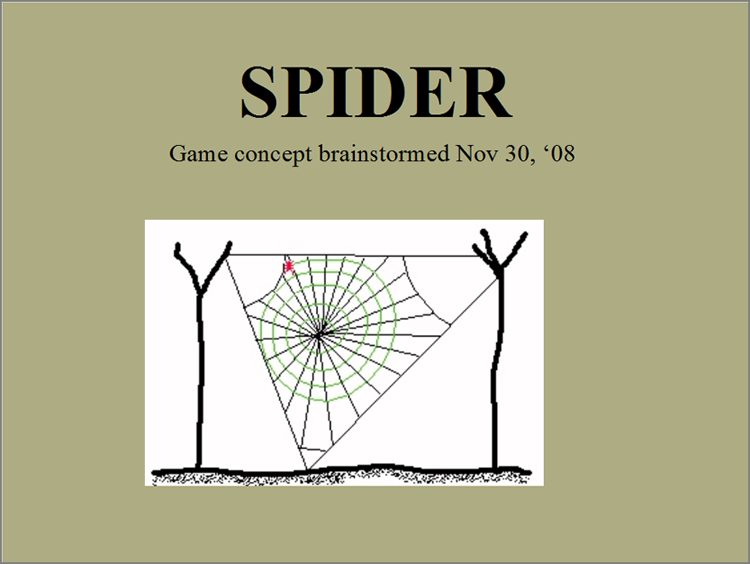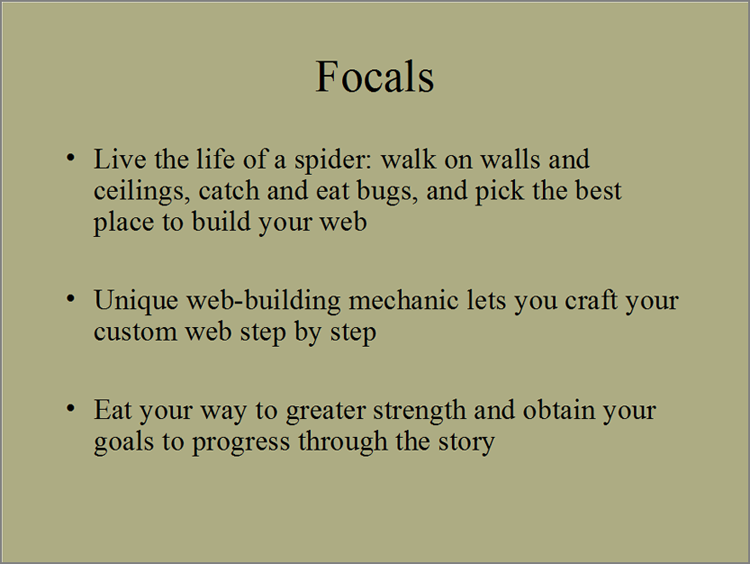Excerpts from Spider: The Secret of Bryce Manor
“This document [see Figure 16-1] is the ‘treatment’ of a brainstormed game concept,” says Smith. “Its purpose was to develop a one-sentence idea into a potential game design that everyone could envision. This was written quickly, as we were considering several concepts simultaneously.
Figure 16-1: Spider game design document

“It’s important that you be able to boil the essence of your game down to a small number of very succinct bullet points.” (See Figure 16-2.) “This helps you identify what is most important so you can focus on it to the exclusion of potential distractions and embellishments.
“In this case, we already see right away that this document describes a different version of Spider than what we shipped.” (See Figure 16-3.) “We started with this concept but let the software speak to us once digital prototyping began, evolving it into a more accessible, casual game. There was never any need to redo this documentation, but if I had, the second bullet would probably say something about the core ‘action drawing’ mechanic and the third would reference the environmental storytelling that quietly invites players into the mystery of an abandoned mansion.
Figure 16-2: Gameplay focus of Spider

Figure 16-3: Spider game summary
Get Game Design Secrets now with the O’Reilly learning platform.
O’Reilly members experience books, live events, courses curated by job role, and more from O’Reilly and nearly 200 top publishers.

